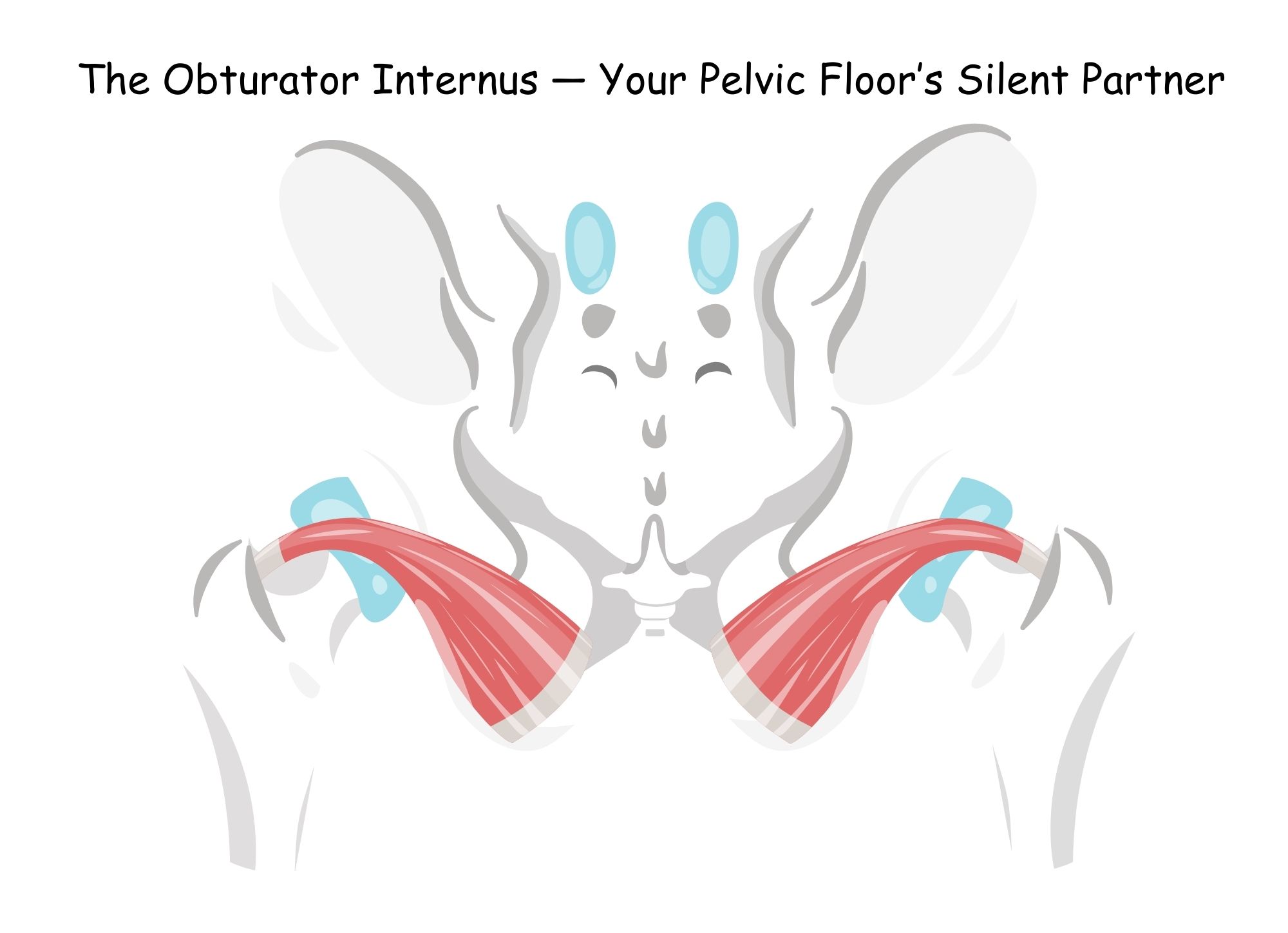The Obturator Internus — Your Pelvic Floor’s Silent Partner
When it comes to pelvic floor dysfunction, most people focus on the pelvic floor muscles themselves — and for good reason. These muscles support the bladder, uterus or prostate, and rectum, and play a key role in continence, sexual function, and core stability.
But there’s a lesser-known muscle that works closely with the pelvic floor — and it deserves more attention: the obturator internus.
What is the Obturator Internus?
The obturator internus (OI) is a deep hip muscle located on the inner side of the pelvis. It originates on the inside of the pelvic bones and exits the pelvis through the lesser sciatic foramen, attaching to the femur (thigh bone). Its main job? External rotation and stabilisation of the hip joint.
However, its role doesn't end there.
How is it Connected to the Pelvic Floor?
The obturator internus sits right next to — and even forms part of the wall of — the pelvic cavity. It lies in close contact with the levator ani, a group of muscles that make up most of the pelvic floor.Because of this close anatomical relationship, tension, weakness, or overactivity in the obturator internus can influence how the pelvic floor functions. The two areas work together to stabilise the pelvis and support internal organs.For example:
- Hypertonicity (tightness) in the OI can contribute to pelvic pain, especially pain with sitting or during internal exams.
- It may also cause referred pain to the vagina, rectum, or tailbone, which is often misdiagnosed.
- Dysfunction in the OI can affect hip mobility, pelvic alignment, and even impact how well the pelvic floor can contract or relax.
Why Does This Matter in Pelvic Health Physio?
As pelvic health physiotherapists, assessing the obturator internus is crucial — especially when patients present with symptoms like:
- Deep pelvic pain
- Pain with hip movements
- Pain during intercourse (dyspareunia)
- Sacroiliac joint or tailbone discomfort
- Postural imbalances
Treatment may include internal or external release techniques, hip mobility work, neuromuscular retraining, and exercises to support coordination between the OI and pelvic floor.
The Takeaway
The obturator internus might be out of sight, but it shouldn't be out of mind.
Its relationship with the pelvic floor is vital for pelvic health, posture, and pain management.If you're experiencing persistent pelvic pain, hip tension, or unexplained pelvic floor symptoms, your OI could be involved.
A pelvic health physiotherapist can assess and address these deep muscle imbalances — helping you move and feel better from the inside out.
